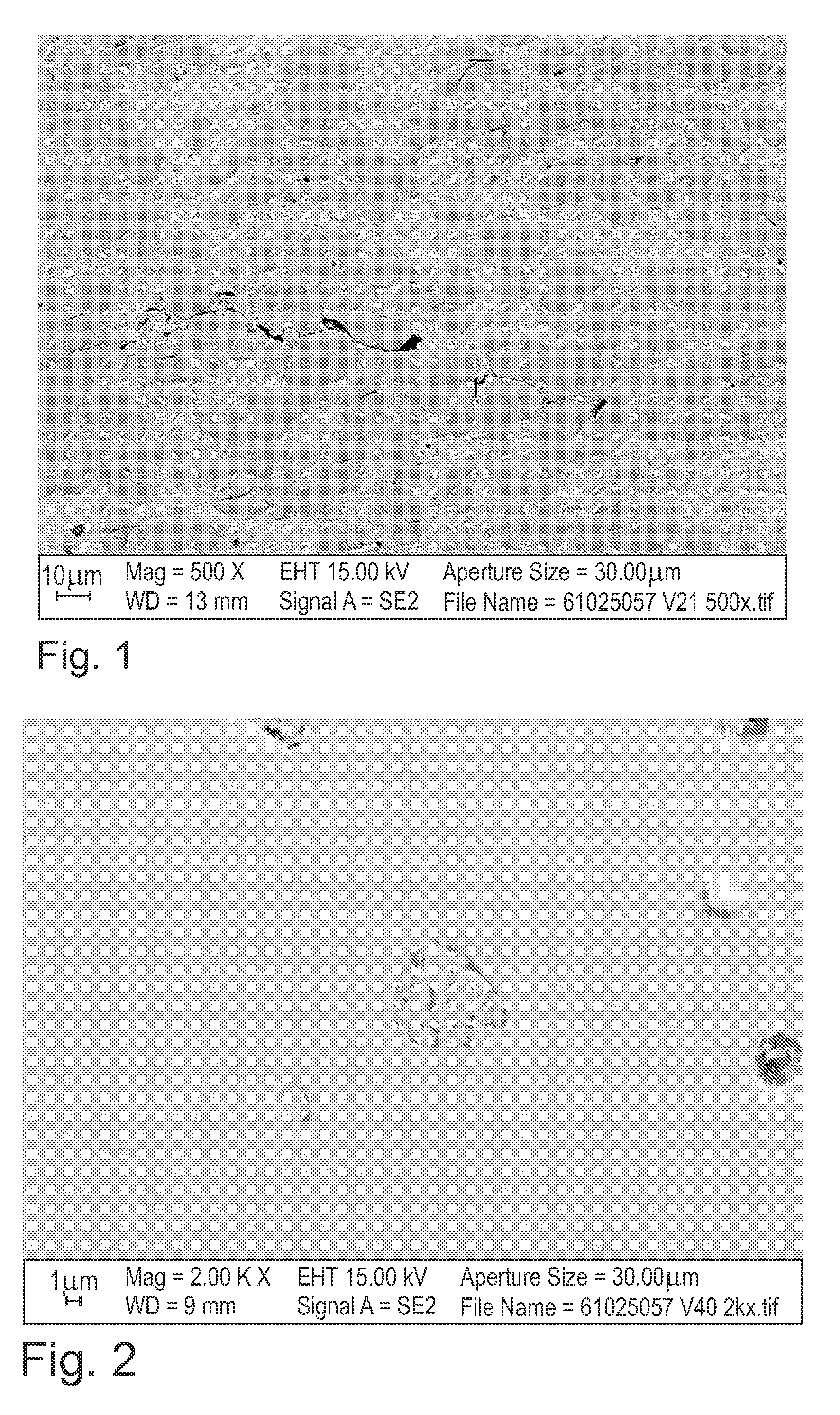Coating material based on a copper-indium-gallium alloy, in particular for the production of sputter targets, tubular cathodes and the like
a technology of copper-indium-gallium alloy and coating material, which is applied in the direction of liquid/solution decomposition chemical coating, vacuum evaporation coating, coating, etc., can solve the problems of lack of cu, inability to obtain constant results in the composition of layers over a longer period of time, and inability to achieve uniform distribution of elements
- Summary
- Abstract
- Description
- Claims
- Application Information
AI Technical Summary
Benefits of technology
Problems solved by technology
Method used
Image
Examples
Embodiment Construction
[0045]When a defined alloy composition and conduction of heat as well as solidification rate are provided, a cubic phase of the Cu5Zn8 prototype phase lattice type is formed in molten CuInGa alloys, with gallium, in this case, occupying the site of the zinc.
[0046]Indium is dissolved in this phase at a proportion of up to 22 weight percent (wt %). If the indium concentration exceeds 25 wt %, precipitation occurs, resulting in the formation of the matrix surrounding the above mentioned phase. If the copper concentration exceeds 63 wt %, indium and gallium are either dissolved in Cu or combine with copper to form the following binary compounds:
PhaseStability range in KCu2Gaγ1298-918Cu2Gaγ 763-1109Cu3Gaβ 298-1188Cu5Ga3γ2298-758Cu7Ga2ζ′298-595Cu7Ga2ζ603-893Cu7In4δ298-904Cu7Inβ847-983
[0047]The binary alloy system InGa does not form phases but a low-melting eutectic mixture at 15° C.
[0048]This can be taken from the literature listed below:[0049]“Constitution Of Binary Alloys”, Hansen, 2. e...
PUM
 Login to View More
Login to View More Abstract
Description
Claims
Application Information
 Login to View More
Login to View More - R&D
- Intellectual Property
- Life Sciences
- Materials
- Tech Scout
- Unparalleled Data Quality
- Higher Quality Content
- 60% Fewer Hallucinations
Browse by: Latest US Patents, China's latest patents, Technical Efficacy Thesaurus, Application Domain, Technology Topic, Popular Technical Reports.
© 2025 PatSnap. All rights reserved.Legal|Privacy policy|Modern Slavery Act Transparency Statement|Sitemap|About US| Contact US: help@patsnap.com



